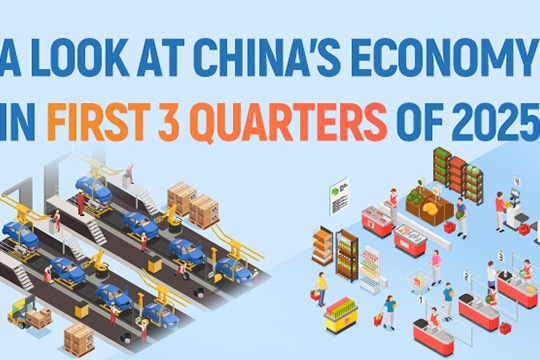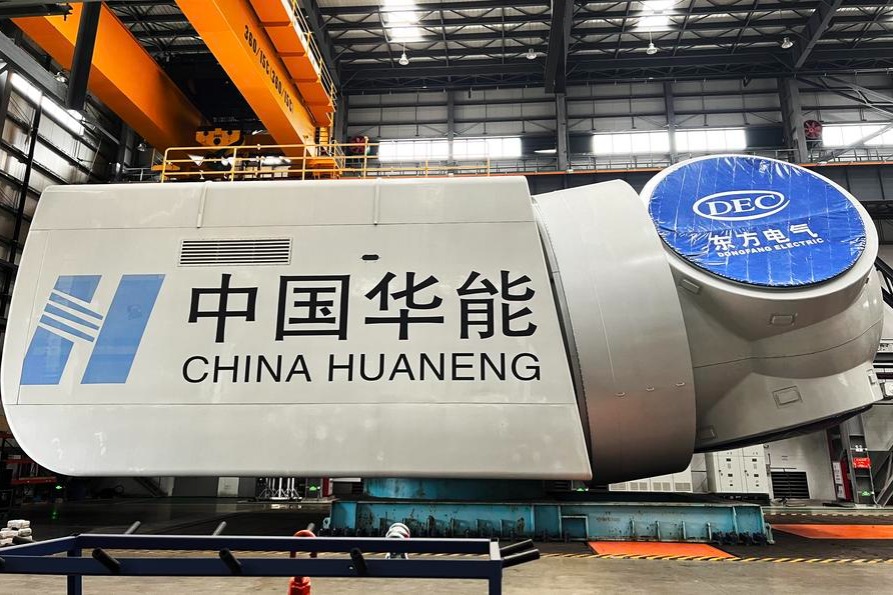Train link creates great range of prospects, win-win cooperation


China-Laos Railway connects with global transportation network, helps improve lives on both sides of border
Editor's Note: In this series, China Daily looks at some of the areas where major progress has been made in the 10 years since the 18th National Congress of the Communist Party of China held in November 2012.
There is a Chinese saying that if you want to get rich, build a road first.
Mohan, a far-flung town deep in the southern part of Southwest China's Yunnan province, now has more than a road. To its advantage, it also has, as the result of hard work over the past decade, the China-Laos Railway.
The rail line not only links Mohan with the rest of China, but with the outside world as well, including Laos and other countries in Southeast Asia. As a result, the border town has become a "frontier" of transportation links.
"With the opening of the railway, the high mountains are no longer high and the long journeys are no longer long from Kunming to Vientiane," President Xi Jinping said on Dec 3 last year when he witnessed, along with Laotian President Thongloun Sisoulith, the ceremonial opening of the China-Laos Railway via video link.
The railway is 1,035 kilometers long, and its trains have a design speed of 160 kilometers per hour. The rail line runs from Kunming, capital of Yunnan, and passes through 13 passenger and freight stations in the province before leaving China at the Mohan land port, continuing on to Vientiane, the Laotian capital. There are 10 stations along the Laos section of the rail line.
As of early August, the China-Laos Railway had carried over 5.5 million travelers, according to China Railway Kunming Group.
Among those who have seen direct benefits from the rail line is Yan Dongkai, 26, a farmer who lives in a village in Mengla county that was formerly inaccessible. He made ends meet by growing rice, corn crops and rubber trees. Mengla, in which the town of Mohan is located, is famous for its rubber trees.
The China-Laos Railway changed the situation dramatically for Yan and others.
"It takes only five hours to reach Kunming by riding the China-Laos Railway," Yan said. "People in our village are finding odd jobs in the railway stations and related projects and are living a better life."
Yan now works as a porter in his free time, earning more than 3,000 yuan ($419) a month in additional income.
The land port within the jurisdiction of Mohan is on China's border with Laos and offers convenient land passage to Southeast Asia. The Mohan train station is the last stop in China before the China-Laos Railway crosses the border. The station is surrounded by villages of ethnic minority people such as the Dai and Hani.
Yibofeng, a 24-year-old woman of the Dai ethnic group, who lives in Xishuangbanna in the southwest tip of Yunnan, studied the Laotian language at a Kunming-based technical college before working as a train conductor in the Chinese part of the China-Laos Railway.
"It took me two days to go to the college by bus. It was really a rough journey," she said.
Now it takes only six hours for people in Yibofeng's village to travel to Kunming using the railway.
Previously, Yibofeng's mother was able to sell her handmade Dai garments only in adjacent villages. Now, thanks to the railway, her garments have found a market in Kunming.
'Helpful to our lives'
On the other side of the border, Thepmoukda Phetsalath, a 27-year-old Laotian, is a translator at the Laos-China Electricity Investment Co in Vientiane. She graduated from Tongji University in Shanghai in 2019.
"The China-Laos Railway will offer Laotians a lot of opportunities and is very helpful to our lives," she said.
"It only takes three hours from Vientiane to Boten, the first stop through which the China-Laos Railway enters my country, cutting the travel time by half," she added.
For her relatives, who had previously never seen a train, the railway "is a life-changing experience", she said.
On July 1, a track change station was opened in Vientiane, creating a link between the China-Laos Railway and the Laos-Thailand Railway, according to the Vientiane Times.
Chanthone Sithixay, chairman of Vientiane Logistics Park Co, called the rail link "a new milestone" in freight transit and transportation between the 10 member states of the Association of Southeast Asian Nations and China, the world's second-largest economy.
The link "will streamline the transportation system and save time and money", he said. "This offers huge advantages to businesses in Laos, China and Thailand as well as other business operators across the region."
As part of the China-proposed Belt and Road Initiative, the China-Laos Railway also connects to the China-Europe Railway Express, linking ASEAN nations to European markets through a cost-effective transportation system.
Yuan Minghao, general manager of China-Laos Railway Co, said that as the China-Laos Railway heads north, it connects to rail networks that reach major Chinese cities including Chengdu, Sichuan province; Chongqing municipality; Wuhan, Hubei province; and Xi'an, Shaanxi province, as well as many logistics distribution centers in China and along the route of the China-Europe rail line.
Heading south, the railway links the transportation networks that reach several major ports, including Thailand's Laem Chabang Port and Singapore.
"Over time, it (the railway and connected networks) will become a new land and sea transport link and connectivity route," Yuan said.
Panya Paputsaro, president of Thailand-based Kaocharoen Train Transport Co, said he was able to cut transportation costs by up to 40 percent when shipping containers by rail from Thailand to Europe, compared with the cost to transport by sea.
Meanwhile, something more than the railway is turning Mohan into a bustling town.
On Aug 31, 2015, as witnessed by President Xi and then Laotian president Choummaly Sayasone, the agreement for the Mohan-Boten Economic Cooperation Zone was signed on behalf of the two countries.




































